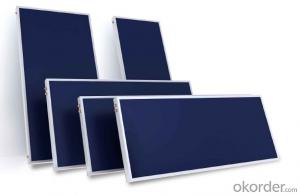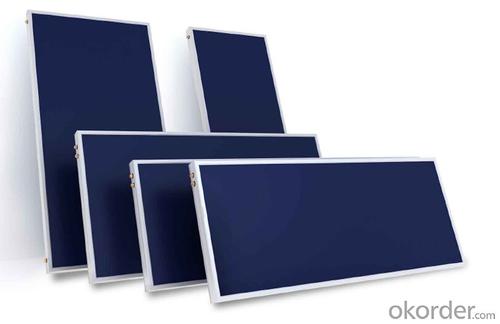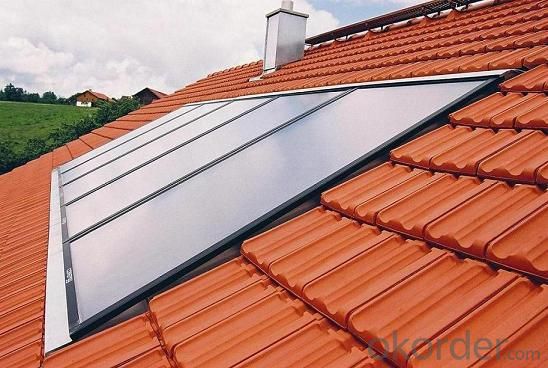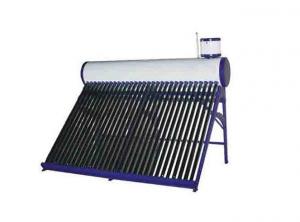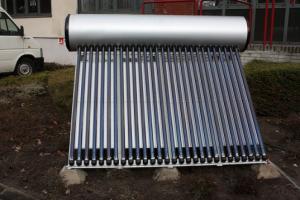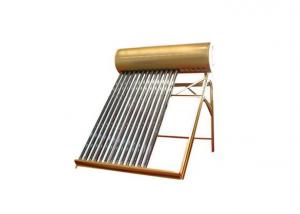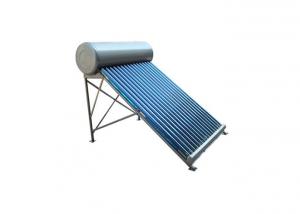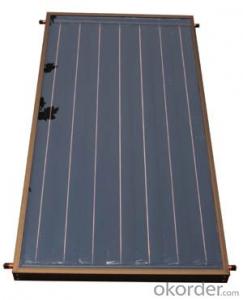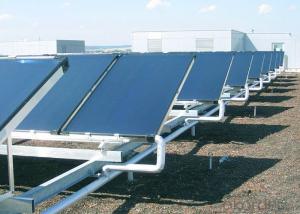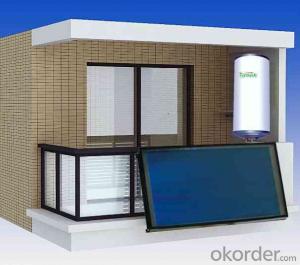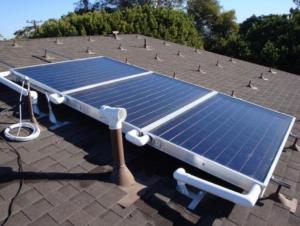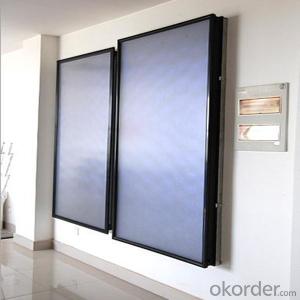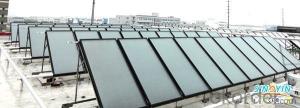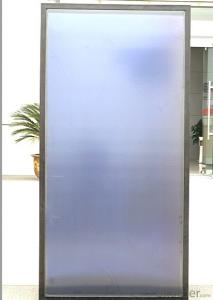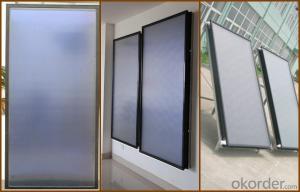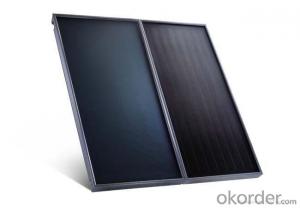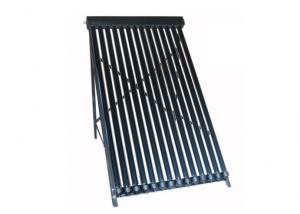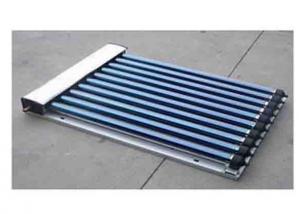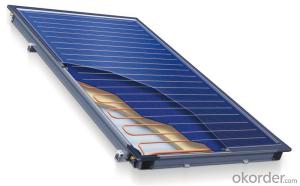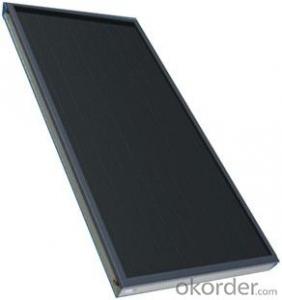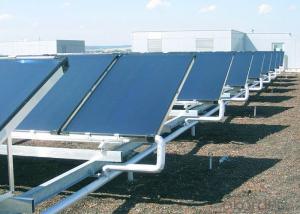Tenkiv Solar Collectors - Flat Plate Solar Collector for Water Heater
- Loading Port:
- Tianjin
- Payment Terms:
- TT OR LC
- Min Order Qty:
- 1 kg
- Supply Capability:
- 50 kg/month
OKorder Service Pledge
OKorder Financial Service
You Might Also Like
1. Structure of Flat Plate Solar Collector For Water Heater
Flat plate solar collector is one of the most basic types of solar collectors, and the structure of this product is shown as following picture. The simple structure, reliable operation, approriate cost and great ability for pressure with large surface for heat absorption make it one of the best choice for the combination of solar energy and the architecture. This flat plate solar collector is designed for water heater.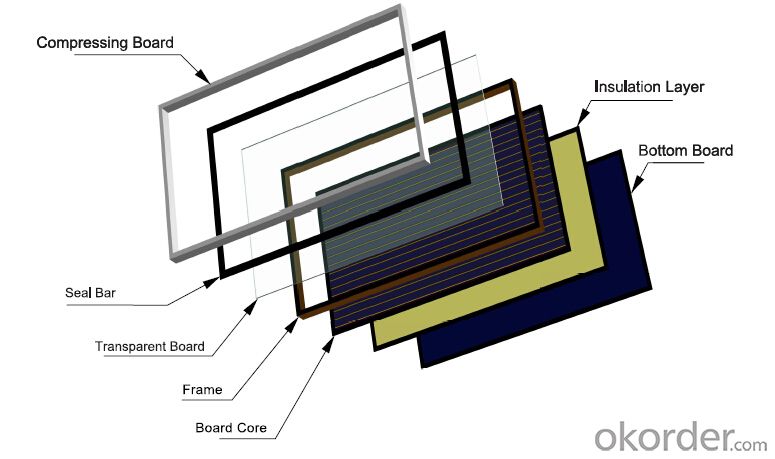
2. Main Features of Flat Plate Solar Collector For Water Heater
Laser welded panel with blue tint film increases the
efficiency of heat accumulation and heat transmission.Ultra white low iron content tempered glass achieves
high transparency.Dull polish silver board color
3. Flat Plate Solar Collector For Water Heater Images
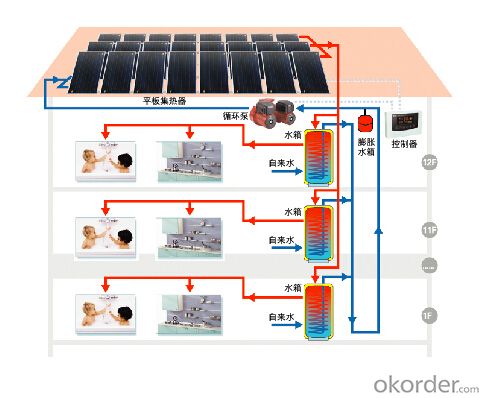
4. Flat Plate Solar Collector For Water Heater Specification
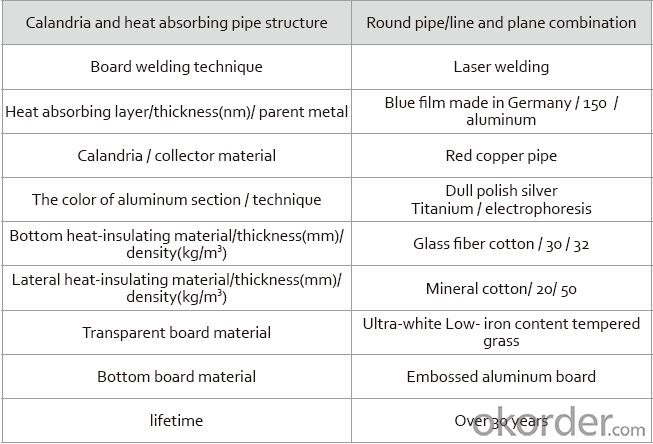
5. FAQ
(1) Q:Compared to the vacuum tube solar system, what is the advantage of flat plate solar collector system?
Re: In the condition of the same area, the flat plate solar collector system of high efficiency can provide more hot water.
(2)Q: Can you offer samples?
Re: It seems a little difficult for the moment, but if you are interested, you are welcom to have a visit in our factory.
- Q: What is the payback period for a solar collector?
- The payback period for a solar collector can vary depending on factors such as the cost of installation, the energy savings achieved, and any available financial incentives or tax credits. On average, the payback period for a solar collector can range from 5 to 15 years.
- Q: With the tonnage of solar collectors and air to hot water which power consumption
- resulting in no hot water in the rain and snow weather; and air to hot water works relative It is not affected by the sunshine, theoretically can be used throughout the year.
- Q: Can solar collectors be used in areas with strict building codes?
- Yes, solar collectors can be used in areas with strict building codes. However, the installation and design of solar collectors must comply with the specific regulations and guidelines set by the local building authorities. This may include considerations such as the size, placement, and aesthetic requirements of the solar collectors to ensure they integrate seamlessly with the existing architectural style and structures in the area. It is essential to consult with building officials or professionals experienced in navigating building codes to ensure compliance while incorporating solar collectors.
- Q: Can solar collectors be used for heating oil in industrial processes?
- Yes, solar collectors can be used for heating oil in industrial processes. Solar thermal systems can be designed to heat oil by using sunlight to generate heat, which is then transferred to the oil through a heat exchanger. This method can be particularly effective in industries that require heating processes, such as oil refineries, chemical plants, or manufacturing facilities. Solar collectors, also known as solar thermal panels, are designed to capture and convert sunlight into heat. They consist of a series of tubes or panels that contain a heat-absorbing material. When sunlight strikes the absorber material, it heats up, and the heat is transferred to a fluid flowing through the tubes or panels. This heated fluid can then be used directly or indirectly to heat oil in industrial processes. In the case of industrial processes that require heating oil, a solar thermal system can be integrated into the existing heating infrastructure. The solar collectors can be installed on rooftops or ground-mounted in areas with high solar exposure. The heat generated by the solar collectors can be used to preheat the oil, reducing the energy consumption of conventional heating systems. Solar thermal systems can provide significant energy savings and reduce greenhouse gas emissions in industrial processes that rely on oil heating. By utilizing renewable solar energy, industries can decrease their dependence on fossil fuels and contribute to a more sustainable energy future. However, it is worth noting that the effectiveness of solar collectors for heating oil in industrial processes may depend on various factors, including the availability of sunlight, the required temperature of the oil, and the specific needs of the industrial process. Therefore, a detailed analysis and engineering evaluation should be conducted to determine the feasibility and optimal design of a solar thermal system for heating oil in a specific industrial setting.
- Q: Can solar collectors be used for heating paper mills?
- Yes, solar collectors can be used for heating paper mills. Solar thermal systems can provide heat through the use of solar collectors, which capture and convert sunlight into thermal energy. This energy can be utilized for heating purposes in various industrial applications, including paper mills. By integrating solar collectors into the heating systems of paper mills, renewable energy can be harnessed to reduce reliance on fossil fuels and decrease carbon emissions.
- Q: Are solar collectors suitable for historic buildings?
- Yes, solar collectors can be suitable for historic buildings. While it is important to preserve the architectural integrity and historical value of these structures, solar collectors can be discreetly integrated into the design, ensuring minimal visual impact. With advancements in technology, there are now options available that blend well with the aesthetics of historic buildings, allowing them to harness clean energy without compromising their unique character. Additionally, solar collectors can provide a sustainable and cost-effective solution for powering historic buildings, helping to reduce their carbon footprint while preserving their historical significance.
- Q: Can solar collectors be used in textile factories?
- Yes, solar collectors can be used in textile factories. They can help offset energy consumption by harnessing solar power to generate electricity or heat water for various textile manufacturing processes. This can lead to reduced reliance on conventional energy sources, lower operating costs, and a more sustainable and environmentally friendly approach to textile production.
- Q: What is the impact of snow on solar collector performance?
- The impact of snow on solar collector performance is generally negative. Snow accumulation on the surface of solar collectors reduces the amount of sunlight reaching the photovoltaic panels or solar thermal collectors, which in turn decreases their efficiency and energy output. Additionally, snow covering the collectors creates an insulating layer, preventing the panels from generating heat. In order to mitigate this impact, regular maintenance and snow removal may be necessary to ensure optimal performance of solar collectors in snowy climates.
- Q: Can solar collectors be used for heating cinemas?
- Yes, solar collectors can be used for heating cinemas. Solar thermal systems can be installed to collect and convert sunlight into heat energy, which can then be used to heat the cinema building. This can help reduce energy costs and carbon emissions associated with traditional heating methods, making it an environmentally friendly option for heating cinemas.
- Q: Can solar collectors be used for heating museums?
- Yes, solar collectors can be used for heating museums. Solar thermal collectors can capture and convert sunlight into heat energy, which can then be used for heating buildings. By utilizing solar collectors, museums can reduce their reliance on traditional heating systems and decrease their carbon footprint while maintaining a comfortable indoor environment.
Send your message to us
Tenkiv Solar Collectors - Flat Plate Solar Collector for Water Heater
- Loading Port:
- Tianjin
- Payment Terms:
- TT OR LC
- Min Order Qty:
- 1 kg
- Supply Capability:
- 50 kg/month
OKorder Service Pledge
OKorder Financial Service
Similar products
Hot products
Hot Searches
Related keywords
